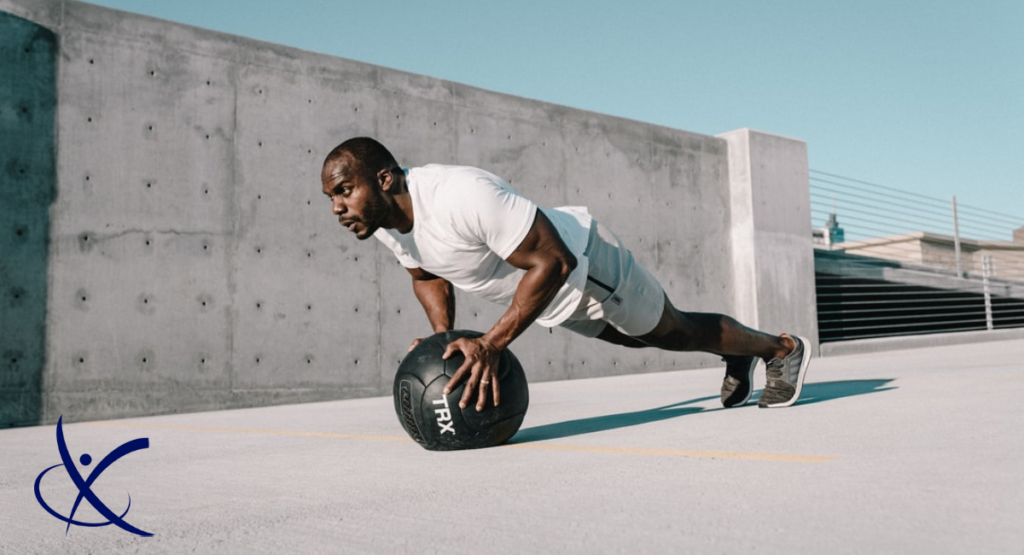Self-Treatment Options for Pain Relief
Controlling Pain with Muscle Activation
There are 3 main types of muscle contraction: shortening, lengthening, and no change at all. I want to talk a bit about contracting muscles without changing length, basically what we call “isometrics.” This is when you activate a muscle without moving your body parts at that joint. For instance, if I go into the parking lot and try and flip a car over, my biceps will be working but the car weighs far more than the amount of force I can produce, so my elbow won’t actually change position. This is a great, albeit a crazy, example of an isometric muscle contraction. We can use these isometrics in all different body positions. The best part about these types of exercises is that they can be very beneficial for pain reduction as a gentle stress to the area that is uncomfortable.
I usually think of the knee or shoulder when talking about using isometrics for painful areas. They are two body parts that people often report feeling pain. So we can choose two options for using these isometric exercises. We can either put the joint in the “mid-range” of the movement and perform the isometric, or we can go to the painful position and apply gentle isometric contractions. The latter often ends up being towards the end or extremes of motion and this approach can actually end up improving overall range of motion if it’s limited by pain.
So how do you execute these exercises? Well, the good news is you don’t have to try and flip cars over to get it done. Its really as simple as finding certain motions that are uncomfortable or even just stiff or tight, and using gentle efforts against some sort of resistance. That can be holding a weight, or using a machine, or even using a wall or a countertop depending on the movement. There are too many examples to describe, so I’m going to save that for some demonstrations instead online. Keep your eyes peeled for our Instagram or Facebook videos.
Perhaps more important is your effort level. Once you find the proper setup, then comes producing force. We don’t want you to push as hard as you can. Instead, I like to start people 50-75% of their maximum ability. So think of your max as pushing 100%, all out. We’re going to be sub-maximal until your tolerance improves, the pain reduces, or motion increases. There are a number of ways we can use this, and the goal is to work up to 90% of your max. For now, we’ll stick with 50-75% as it is safer, especially when dealing with pain or injury.
These isometric contractions are great ways to start initiating some stress to an area without the added mechanical friction associated with full range of motion exercises. This greatly increases the tolerance to loading (and capacity) of certain structures. We usually have people hold them anywhere from 5-45 seconds depending on the goal, and difficulty. I hope this makes some sense of how we can use a sustained hold of a particular area. Definitely keep your eyes peeled online!
Happy Training.
